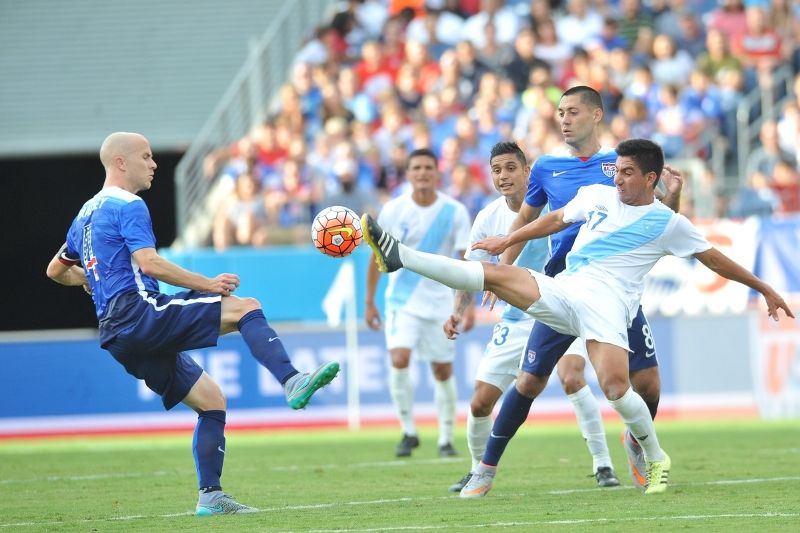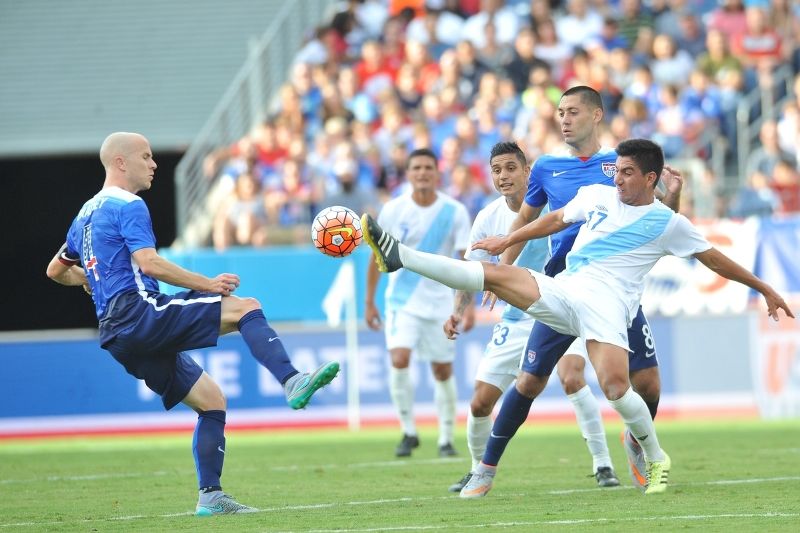Five Things to Know: #USAvGUA
The U.S. and Guatemala are about to get reacquainted with two matches over the next week. Here are five things to know about los Chapines.



The U.S. and Guatemala are about to get reacquainted with two matches over the next week. Here are five things to know about los Chapines.
The Country and Its History
A mountainous and widely forested region, the country’s name was derived from the Nahuatl word “Cuauhtēmallān”, which means “land of many trees”.
Modern-day Guatemala is at the heart of the former Mayan Empire, whose people were one of the most-advanced pre-industrial civilizations in history. Guatemala’s Tikal region is home to approximately 3,000 different constructions built between 700 BC and 900 AD and are now known as the Mayan Ruins.
While the national language in Guatemala is Spanish, there are actually 24 other languages spoken – 22 of which are Mayan-derived (K’iche, Mam and Ixil are three of the most common) and another two which are separately indigenous.
Guatemalan Soccer History
The nation’s soccer history isn’t quite as expansive as its cultural past. Populated by just under 16 million people, Guatemala has never qualified for a FIFA World Cup, but did advance to the final round of Qualifying for the 2006 World Cup where it finished fifth out of six teams.
Guatemala’s biggest soccer success actually came when it won the 1967 CONCACAF Championship and finished sixth at the 1968 Summer Olympic Games in Mexico City. More recently, los Chapines finished fourth at the 1996 CONCACAF Gold Cup and won the 2001 Copa Centroamerica.
Guatemala vs. MNT
Having first met in 1977, Guatemala actually won the first four meetings between the two nations - all friendlies played in Guatemala City. However, the U.S. turned the tide beginning in 1988 and has since racked up a 21-match unbeaten run (15-0-6) against los Chapines, which is the MNT’s record-longest undefeated streak against any nation.
The two sides have become well acquainted over the years, mostly because of matches at this very stage of World Cup Qualifying. Excluding the 1994 World Cup cycle when the U.S. were hosts and didn’t participate in Qualifying, the U.S. and Guatemala have met in every World Cup Qualifying cycle dating back to the 1990 FIFA World Cup, with the MNT holding a 7-0-5 edge.
Some Guys You’ve Probably Heard Of
Guatemala’s squad for these two qualifiers features one of the peskiest players to ever pester Major League Soccer in Carlos Ruiz. Nicknamed “el Pescadito” (The Little Fish), Ruiz scored the game-winning goal for the LA Galaxy in MLS Cup 2002 and went on to play for FC Dallas, Toronto FC, Philadelphia Union and D.C. United over the course of eight different seasons in MLS. Capped 120 times, the 36-year-old Guatemala captain is taking part in his fifth World Cup Qualifying cycle, while his 59 goals rank third among players that are internationally active behind current Galaxy striker Robbie Keane (67 for the Republic of Ireland) and Paris Saint-Germain forward Zlatan Ibrahimovic (62 for Sweden).
Another well-known name on the Guatemala roster is Marco Pappa. In the MNT’s last visit to Guatemala City in 2012, the then Chicago Fire midfielder hit a blinding 81st minute free kick that forced the U.S. to settle for a 1-1 draw. After transferring to Dutch side Herenveen later that summer, Pappa returned to MLS, playing for Seattle Sounders FC before moving to the Colorado Rapids in the offseason.
Teammates with him in Seattle, Clint Dempsey knows quite well the danger Pappa provides los Chapines.
“He’s a player with a lot of quality – you have to watch him on set pieces and also he’s very skillful and has a really good left foot,” Dempsey told ussoccer.com. “You need to make sure you’re aware of that and try to do a good job of limiting his touches in the attacking third. I miss him in Seattle, I wish he was still there. He’s a great player and a great person.”
Elevated Climate
Finally, Guatemala City provides one of the highest elevations the U.S. will play at in CONCACAF countries. While not the difficult 7,382 foot elevation that Mexico City is perched upon, Estadio Mateo Flores still sits nearly a mile above sea level at roughly 4,900 feet.
For comparison’s sake, San Jose, Costa Rica is 3,845 feet, while San Salvador, El Salvador is 2,159 feet.